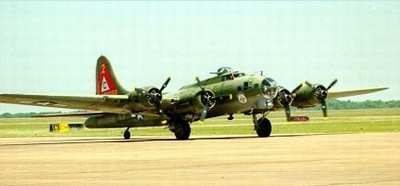Fri, Aug 31, 2012
First Lt. Harry Eck Was Aboard A B-17G That Went Down Over Germany
The remains of a U.S. serviceman, missing in action from World War II, have been identified and returned to his family for burial with full military honors, according to the Department of Defense POW/Missing Personnel Office (DPMO).

On Sept. 13, 1944, Army Air Forces 1st Lt. Harry W. Eck, of Minot Ward, ND, and and eight other crew members were on a B-17G Flying Fortress that crashed near Neustaedt-on-the- Werra, Germany. Only one of the crewmen is known to have successfully parachuted out of the aircraft before in crashed. The remaining eight crewmen were buried by German forces in a cemetery in Neustaedt. Following the war, U.S. Army Graves Registration personnel attempted to recover the remains of the eight men, but were only able to move the remains of one man to a U.S. military cemetery in Holland. In 1953, with access to eastern Germany restricted by the Soviet Union, the remains of the seven unaccounted for crewmen were declared Non-Recoverable.
In 1991, a German national who was digging a grave in the cemetery in Neustaedt, discovered a metal U.S. military identification tag and notified officials. Due to German burial law, Joint POW/MIA Accounting Command (JPAC) wasn’t granted access to the site until 2007 and excavated the location in 2008. The team recovered human remains and additional metal identification tags from three of the crewmembers.
To identify Eck’s remains, scientists from the JPAC used forensic identification tools and circumstantial evidence, including dental comparisons. Additionally, the Armed Forces DNA Identification Laboratory used mitochondrial DNA— which matched that of Eck’s cousin — in the identification of his remains.
Of the 16 million Americans who served in World War II, more than 400,000 died. At the end of the war, the U.S. government was unable to recover and identify approximately 79,000 Americans. Today, more than 73,000 are unaccounted for from the conflict.
(B-17G image from file)
More News
From 2023 (YouTube Version): Legacy of a Titan Robert (Bob) Anderson Hoover was a fighter pilot, test pilot, flight instructor, and air show superstar. More so, Bob Hoover was an i>[...]
Get The Latest in Aviation News NOW on Instagram Are you on Instagram yet? It's been around for a few years, quietly picking up traction mostly thanks to everybody's new obsession >[...]
Aero Linx: B-52H Stratofortress The B-52H Stratofortress is a long-range, heavy bomber that can perform a variety of missions. The bomber is capable of flying at high subsonic spee>[...]
Altimeter Setting The barometric pressure reading used to adjust a pressure altimeter for variations in existing atmospheric pressure or to the standard altimeter setting (29.92).>[...]
"Knowing that we play an active part in bettering people's lives is extremely rewarding. My team and I are very thankful for the opportunity to be here and to help in any way we ca>[...]
 Classic Aero-TV: Remembering Bob Hoover
Classic Aero-TV: Remembering Bob Hoover ANN FAQ: Follow Us On Instagram!
ANN FAQ: Follow Us On Instagram! ANN's Daily Aero-Linx (05.15.24)
ANN's Daily Aero-Linx (05.15.24) ANN's Daily Aero-Term (05.15.24):Altimeter Setting
ANN's Daily Aero-Term (05.15.24):Altimeter Setting Aero-News: Quote of the Day (05.16.24)
Aero-News: Quote of the Day (05.16.24)



